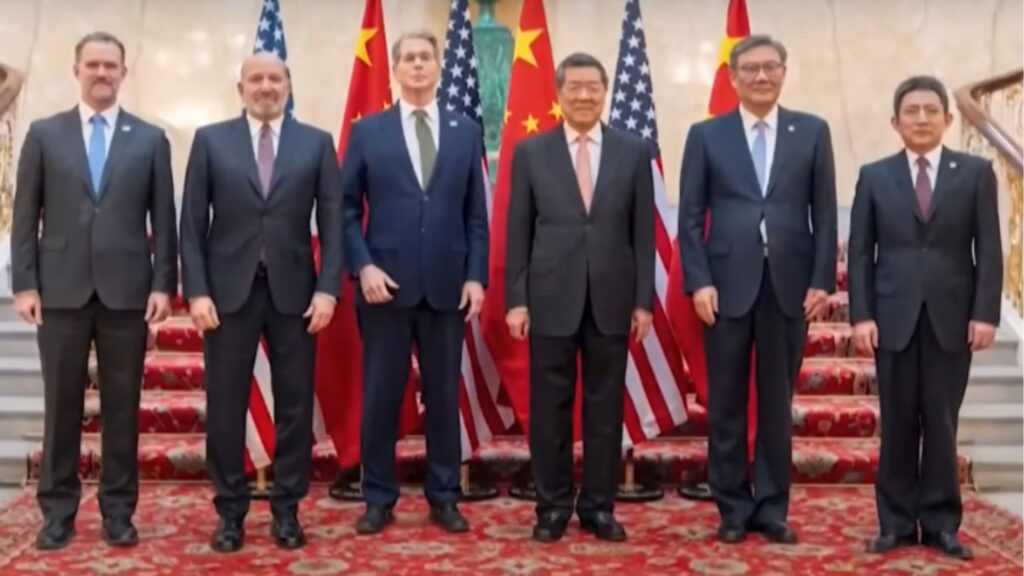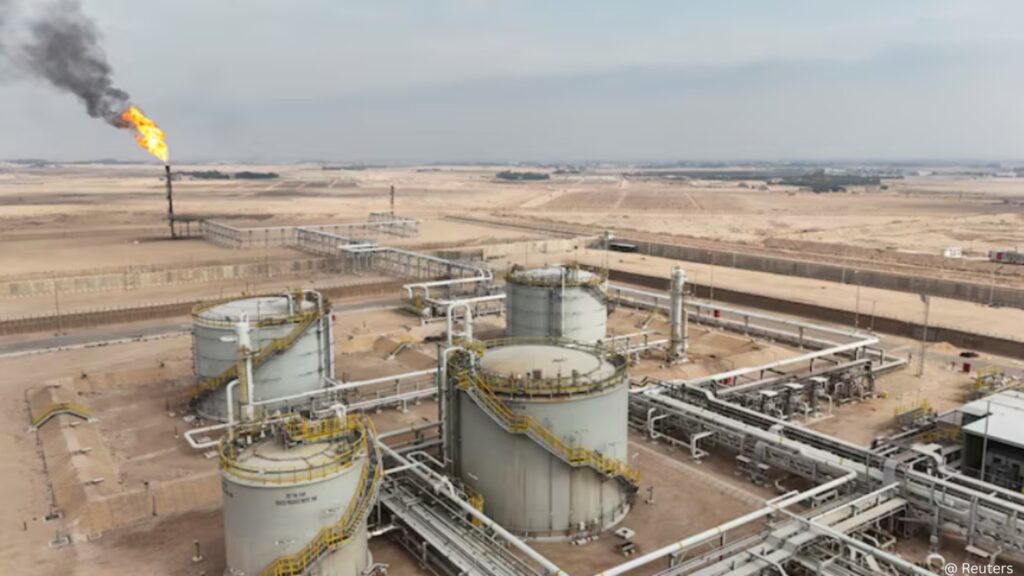The China-U.S. Trade Landscape: Rare Earths and Rising Tensions in June 2025
In June 2025, the U.S. and China focus on rare earth minerals as part of ongoing trade negotiations. But does this mean a larger trade deal is in the works? Read on to understand how this impacts tech, prices, and the future of global trade.
The economic tug-of-war between the United States and China has been a headline-maker for years, with trade wars, tariffs, and political sparring dominating the global scene. And here we are again, in June 2025, witnessing yet another moment in the ongoing drama. This time, it’s not about a comprehensive trade deal but about a more specific issue: rare earth minerals.
While it’s easy to assume that a new, sweeping trade agreement has been signed, that’s not quite the case. Instead, there’s been a shift in the narrative, with China making moves to expedite the export of rare earth minerals to the U.S., following years of economic friction. But what does this actually mean? And more importantly, what impact does it have on you and the rest of the world?
Let’s dive deeper into this specific, yet significant, aspect of the China-U.S. trade landscape.
What’s Really Happening with U.S.-China Trade in June 2025?
It’s easy to get lost in the headlines, especially when we’re talking about a vast, ever-changing issue like international trade. So, let’s clear the air: there is no grand, all-encompassing trade agreement being signed between the U.S. and China in June 2025. Instead, what’s making waves is a targeted effort to address one of the key materials that power much of the world’s technology—rare earth minerals.
Rare earth elements (REEs) are critical for everything from smartphones to renewable energy tech and military systems. They’re not exactly in the spotlight for most of us, but without them, many of the gadgets we use every day wouldn’t function. For years, China has held a dominant position in global REE production, which has put the U.S. and other countries in a position of dependency.
In recent weeks, as part of ongoing trade discussions and tensions, China has made moves to expedite its export review process for these rare earths, which could signal a shift in the balance of trade between the two nations. But let’s be clear: this is not a comprehensive trade deal, and it certainly isn’t a sign that tensions between China and the U.S. are fully resolved. Instead, it’s a sign of the continuing efforts to de-escalate certain trade issues—especially those related to high-tech industries.
The Rare Earths Situation: Why It Matters More Than You Think
You may be wondering, why should you care about rare earths? For the average consumer, the immediate connection might not be obvious. But here’s the deal: these minerals are used in all kinds of devices, from the electric vehicle (EV) you might drive to the smartphone in your pocket. They also play a crucial role in the development of clean energy technologies like wind turbines and solar panels.
By speeding up the process of exporting these minerals, China is essentially offering the U.S. access to critical resources that can support the booming tech industry. But this isn’t about pure altruism. China has long used its dominance in the rare earths market as a point of leverage in global negotiations. The U.S. and China are carefully navigating the complexities of this relationship, with each move designed to balance access to these crucial materials with broader economic and geopolitical interests.
Trade Tensions: Not Over Yet
Let’s not kid ourselves: the trade tensions between the U.S. and China are far from over. While this recent focus on rare earths may appear as a positive step forward, it doesn’t mean the two nations have resolved all their issues. Tariffs are still in place, technology restrictions continue, and the broader trade war looms large over both sides.
In fact, this rare earth mineral issue is just one of the many facets of the larger U.S.-China trade battle. The broader disputes about technology, human rights, and military presence in the South China Sea continue to simmer beneath the surface.
Despite these ongoing tensions, there’s a shared interest in stabilizing certain sectors—like high-tech manufacturing—that both countries depend on. If the U.S. can secure a more reliable flow of rare earths from China, it could help ensure the continued growth of its tech sector, which has been under pressure from various trade policies. But again, this isn’t a sign of total reconciliation. Rather, it’s part of a delicate dance where both sides attempt to achieve their own strategic goals.
What Does This Mean for You?
Okay, so this deal (or rather, shift in policy) is very much about the big picture: geopolitics, trade negotiations, and high-tech industries. But let’s get personal for a second—what does it mean for you, the everyday person?
If you’re someone who relies on technology—whether it’s for work, entertainment, or just staying connected to the world around you—this trade development could have an impact. Expedited access to rare earth minerals may lead to a more stable supply of the components needed to manufacture the next generation of smartphones, electric vehicles, or renewable energy technologies. For instance, if the U.S. tech sector gains a steady supply of these materials, we could see a reduction in costs or, at the very least, fewer disruptions in production.
On the flip side, if the broader trade conflict continues or worsens, we could see prices rise again, especially for tech gadgets and products reliant on these minerals. The impact of this rare earths shift may not be felt overnight, but over time, it could influence your wallet, especially if you’re in the market for new tech.
What’s Next for the U.S.-China Relationship?
Looking ahead, it’s hard to predict where the U.S.-China trade relationship is headed. Will this specific shift on rare earth exports lead to a broader de-escalation of tensions? Or is it simply a temporary lull in a never-ending geopolitical chess match?
One thing is certain: the game between the U.S. and China is far from over. We may see further moves related to technology, tariffs, and resources, all of which will impact the global economy. For now, the rare earths issue has captured attention, but there’s a long road ahead filled with new challenges and opportunities for both sides.
Reflecting on the Bigger Picture
While the recent focus on rare earth minerals might seem like a small piece of the puzzle, it’s a reminder of the complex and intertwined world of global trade. The U.S. and China may not have signed a sweeping new trade agreement, but they are negotiating—and this specific issue is just a glimpse of what’s to come.
The truth is, we’re all part of this global economic web, and decisions made by these two economic giants will have ripple effects across the world. So, whether you’re a tech enthusiast, an investor, or just someone trying to stay informed, this ongoing saga is one you’ll want to keep your eye on.
What do you think about the latest shifts in U.S.-China trade? How do you think it will impact the tech industry and your day-to-day life? Let us know in the comments below. And if you found this post helpful, share it with others to keep the conversation going!








It’s actually a nice and helpful piece of info. I am glad that you shared this useful info with us. Please keep us informed like this. Thank you for sharing.
Hello! I could have sworn I’ve been to this blog before but after browsing through some of the post I realized it’s new to me. Anyways, I’m definitely happy I found it and I’ll be book-marking and checking back frequently!
An interesting discussion is worth comment. I think that you should write more on this topic, it might not be a taboo subject but generally people are not enough to speak on such topics. To the next. Cheers
I am constantly browsing online for articles that can aid me. Thank you!
There is perceptibly a bunch to identify about this. I feel you made some good points in features also.
As a Newbie, I am permanently searching online for articles that can benefit me. Thank you